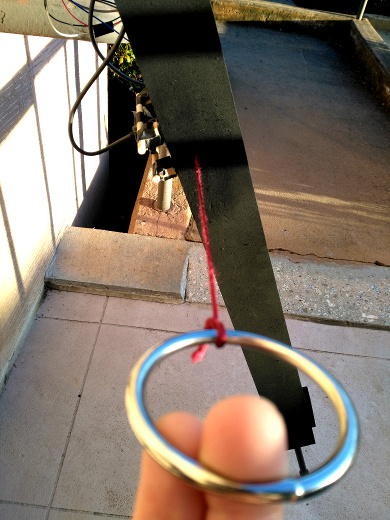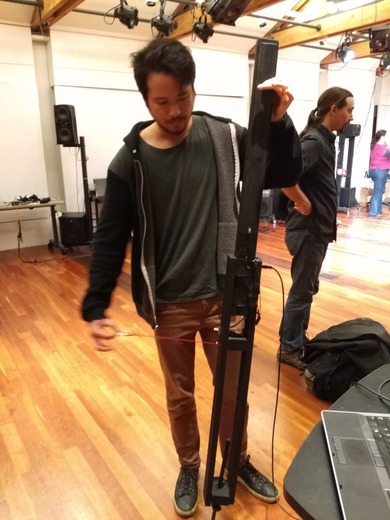Contrenot
Description
The Contrenot (pronounced "con-truh-no") is a musical interface designed to loosely emulate the mechanics of a bowed upright bass. It's inspiration comes from other electronic musical interfaces such as the Ondes Martenot, the Gametrak (as used by SLORK), and the Omatone. The Contrenot has a form factor similar to that of an electric upright bass. The neck consists of a high-resolution linear softpot and FSR for monophonic pitch and aftertouch detection. The body houses a pull-string sensor, created from a gutted tape measure spring, a high resolution incremental rotary encoder, and custom 3d printed parts. The pull-string sensor is able to detect velocity and motion very precisely, allowing for very nuanced control similar to bowing a bass. All sensors and components are powered by an Arduino Uno. Data is sent over USB serial to a Linux computer, where it processed and mapped to sound parameters in Sporth, a stack-based audio synthesis language.
Pictures and Sound


Photo Credit: Steve Mann

Video
A 20-minute demo of the instrument can be found on youtube.
Relevant Blog Posts
Construction of the Contrenot has been documented in a series of blog posts, listed below:
- Sketches for Music 250a (See the first item)
- Springs, Strings, and 3d Printed Things
- Contrenot Assembly
- Contrenot Conclusions
Code
Code used for the Contrenot can be found on github. The repo includes:
- Arduino sketches
- Resources for 3d printed components (OpenSCAD, STL, and gcode files)
- C code for the Contrenot Sporth plugin
- Sporth patches for sound generation
Note that this isn't a DIY project: documentation and instructions are nonexistent and some things might be missing. Nonetheless, the code is still there for the ones who are curious about those sorts of things.
Projects
